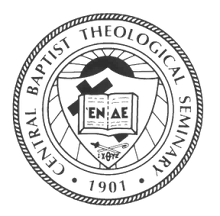We seem to sing it better than we conceptualize
it. We can muster a hearty rendering of
“Holy, Holy, Holy,” probably pondering more about the “early in the morning”
wording than the theological verities. I
am speaking of the blessed Triune God, of course, whose threefold cadence
shapes Christian identity.
 |
| Strater, Louis Joseph. Trinity, from Art in the Christian Tradition, a project of the Vanderbilt Divinity Library, Nashville, TN. |
Once a year in the
liturgical calendar we celebrate Trinity Sunday. It falls the Sunday after Pentecost, the day
when we rejoice in the outpouring of the Spirit. The Spirit has been active in creation and
redemption since the beginning, however; Pentecost is not the first
introduction of the Spirit into God’s great saving project. Rather, Pentecost
connects the Spirit with the work of the Risen Christ, and the Spirit empowers the
church to complete the works of Jesus in service to the Reign of God.
As Christian
doctrine developed in early Christianity, it is understandable that the church
had to make clear both the divinity and personal nature of the Spirit in order
to construct a fully trinitarian understanding of God. Teaching (dogma) about the Spirit and the
Trinity were intertwined from the beginning, and they remain so. Early theologians strained language and
conceptual frameworks to speak of the relational God who, while not literally
three persons, makes known the divine presence in three distinctive ways.
 |
| Masaccio, 1401-1428?. Holy Trinity, from Art in the Christian Tradition, a project of the Vanderbilt Divinity Library, Nashville, TN. |
This mystery
unfolds throughout the texts of Scripture.
From the evocation of creation, to the elusive messengers from God who
visited Abraham and Sarah in Genesis 18, to the conception and ministry of
Jesus, to the early proclamation of the resurrection, to the vision of the
Apocalypse, we see a growing perception of God as Trinity.
Many Christians
think it is a dispensable doctrine, something of negligible concern akin to
angels dancing on the head of a pin. Far
from it! Trinitarian theology is the key
to understanding how God can be both transcendent and immanent, with us yet
beyond us, made after our likeness in the incarnation, and source of vitality
not only in the church, but in all of creation.
The triune God draws humanity into the deep communion enjoyed, the
perichoretic movement of God’s self-giving and communication.
 |
Unidentified stonemason. Trinity, from Art in the Christian Tradition, a project of the Vanderbilt Divinity Library, Nashville, TN.
The ecstasy of
God’s inner life—freely shared with the world—is the model for human community. The capacity to stand outside of self (ek-stasis) in the service of another
construes new identity and possibility.
Each member of the Trinity pours out life into the others, and these
relationships are mutually empowering.
The Trinity shapes
Christian prayer, also. We pray to God
in the name of Jesus through the presence and power of the Spirit. The Spirit prompts prayer in accordance with
the will of God; Jesus promised that the Abba would be responsive to
intercessions offered in his name; and the merciful Father/Mother delights in
“giving good gifts” to those who ask (Matthew 7:11).
So as we sing our
praise to the Trinity this Sunday, let’s remember that some theology is easier
to sing than to analyze. And we join
with all the saints and angels in adoring our God, blessed Trinity.
Molly T. Marshall

No comments:
Post a Comment